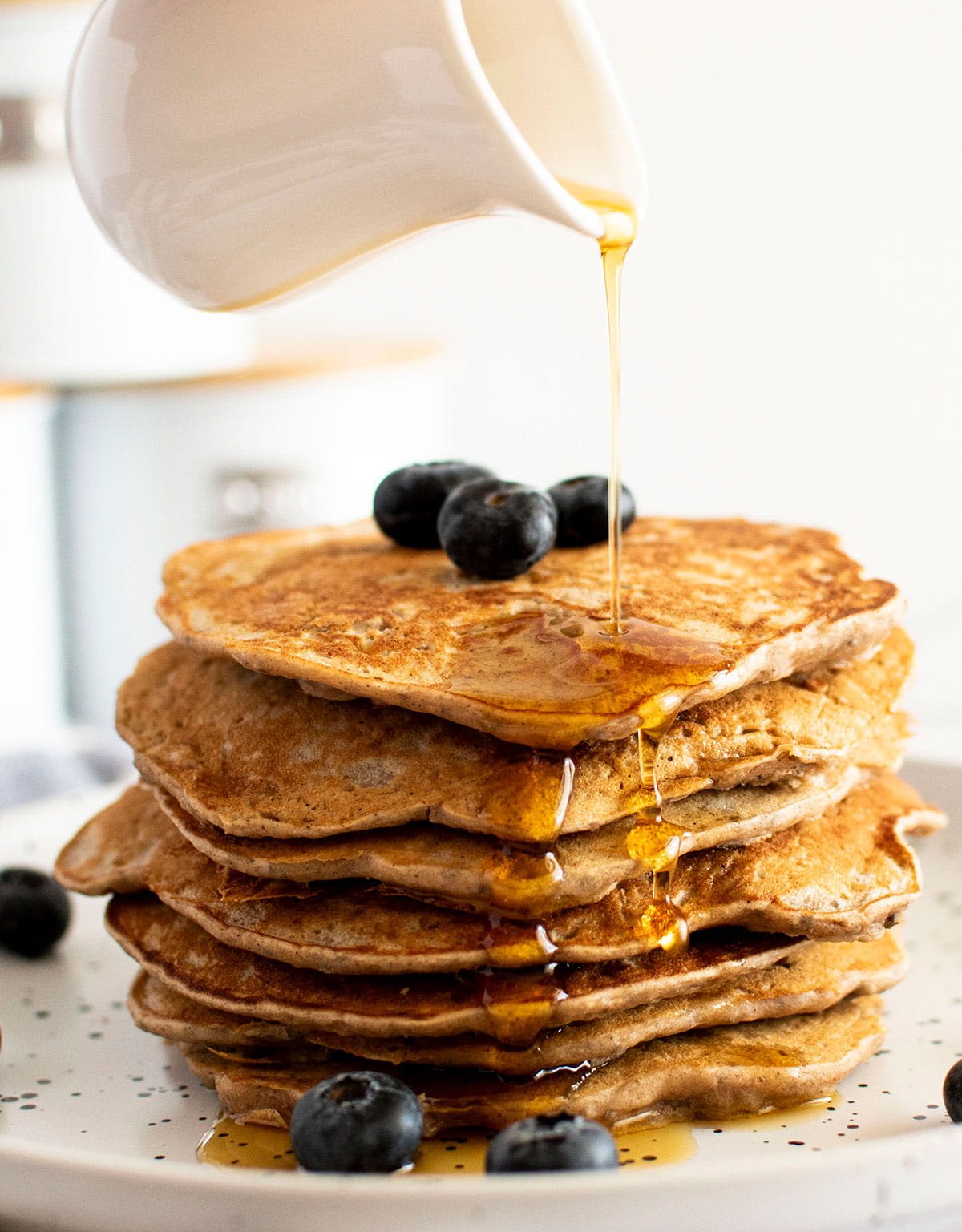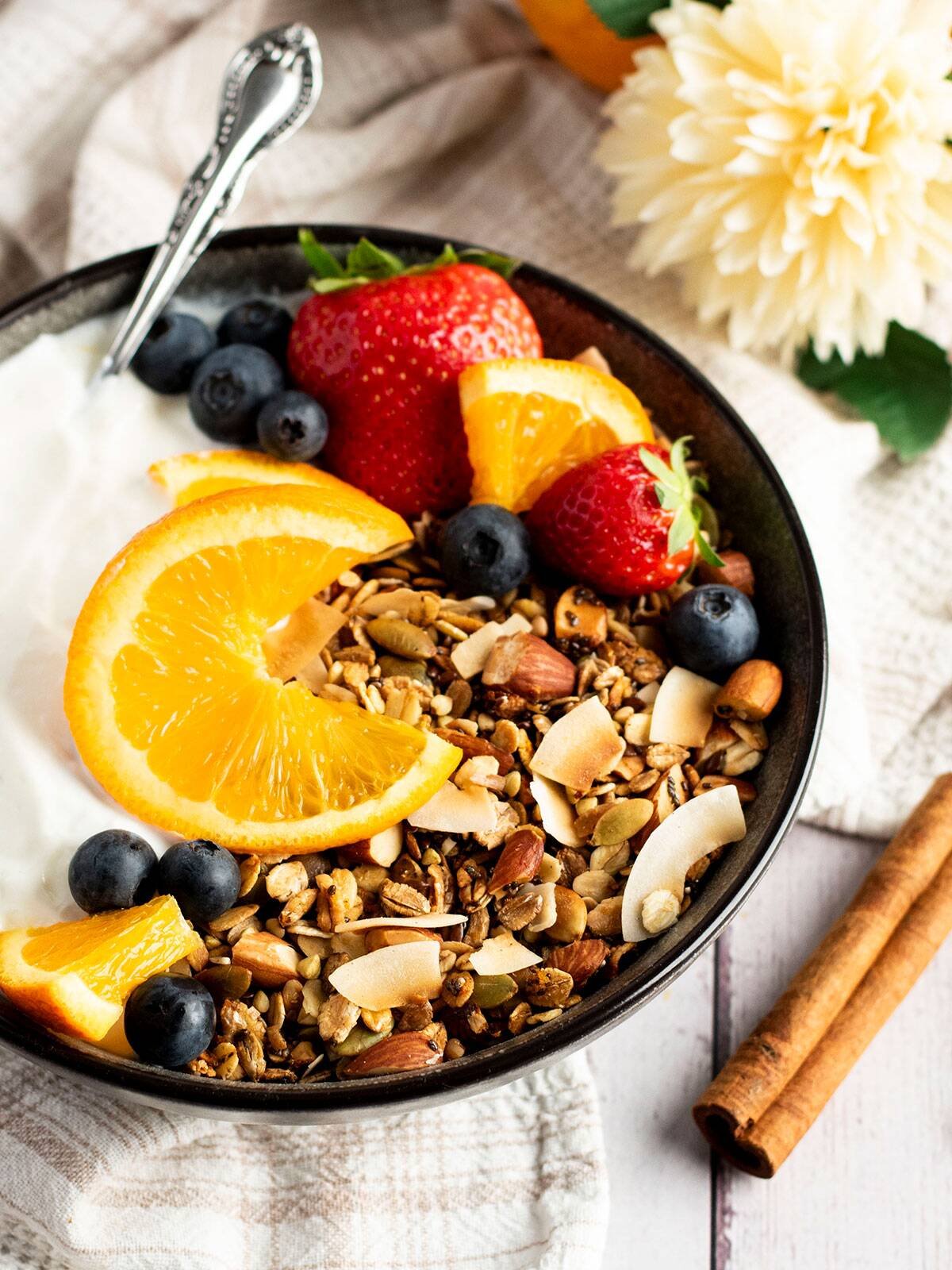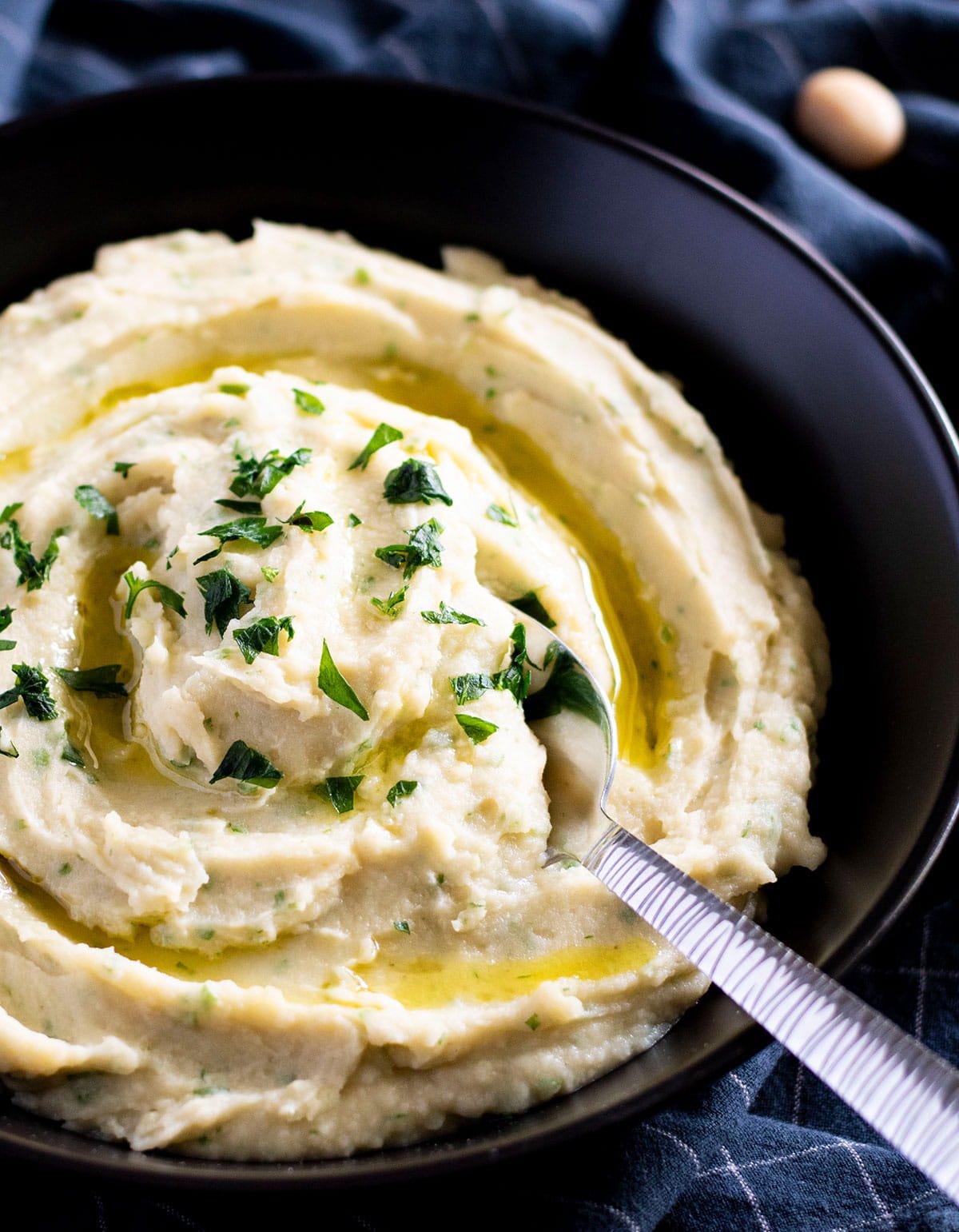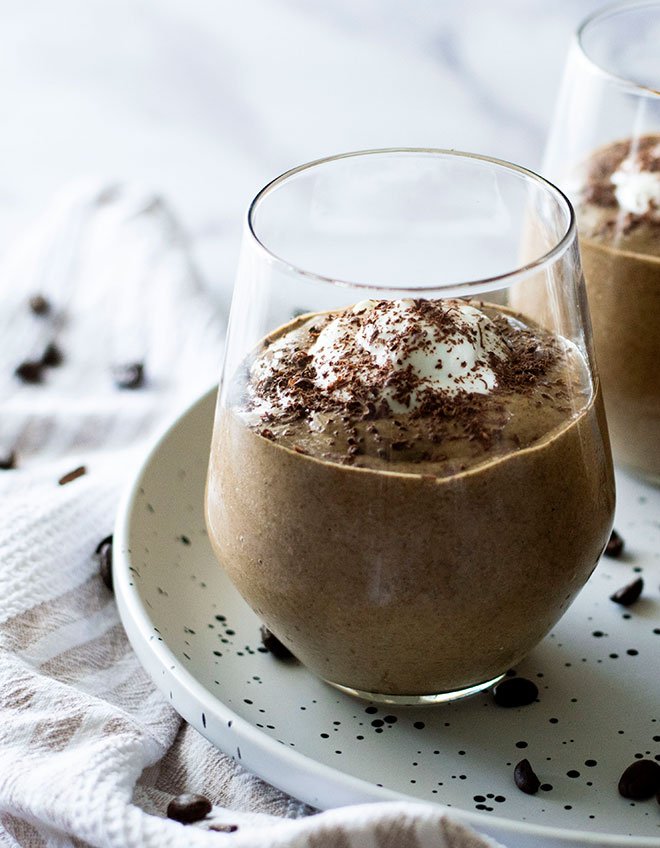Gnocchi Primavera with Creamy Parmesan Sauce
Soft pillows of potato, coated in a rich and creamy parmesan sauce, with spring vegetables and a hint of lemon. This Gnocchi Primavera with Creamy Parmesan Sauce is a super easy, vegetarian gnocchi recipe that tastes great, is nutritious and can be made on a budget! Making it a perfect, nourishing midweek meal!
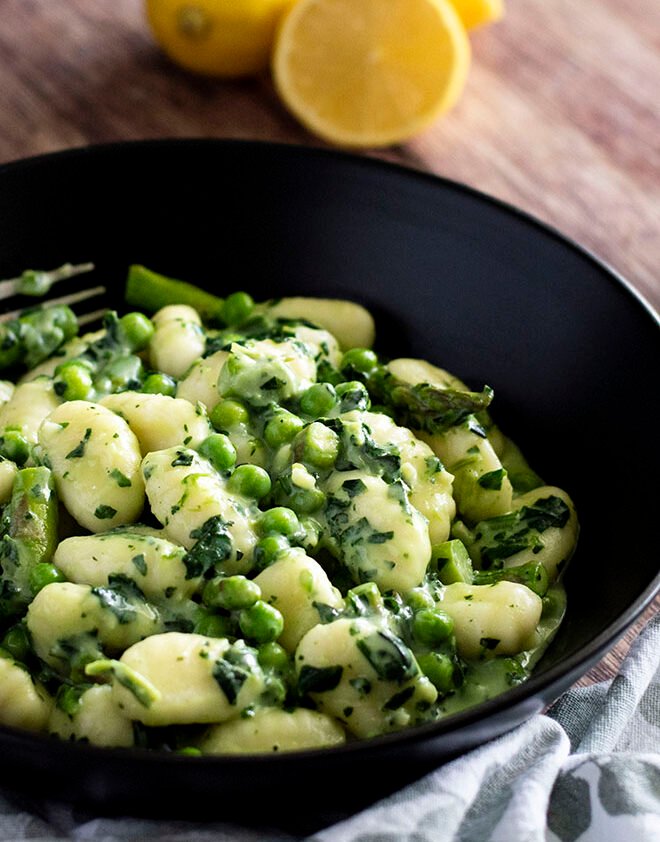
Gnocchi Primavera with Creamy Parmesan Sauce
A regular in my dinner rotation, this recipe is one of my favourite healthy, comfort meals! Best of all, this Gnocchi Primavera with Creamy Parmesan Sauce is so quick and easy to prepare. It can be ready and on the table in less than 30 minutes!
The sauce is so smooth and rich you would swear it was made with cream. Don’t worry, this recipe uses milk instead, which is much lower in fat, making this gnocchi a less guilty option! But you’ve also got the flavour of Parmesan mixed with fresh chives and a pinch of lemon rind to create the ultimate cheese sauce!
You might be thinking that store bought gnocchi will just come out rock hard. Fear not; I have cracked the code on how to make them soft and tender, and it’s insanely easy!
Another factor is that this recipe is also budget friendly, as it uses both frozen (just as nutritious as fresh!) and in season vegetables. As an estimate, this recipe cost me AUD$14.35 (USD$9.31) to make (without any specials!), which is pretty good for feeding a family of 4.
Unlike other pasta recipes, this one will actually leave you feeling full and satisfied. So you don’t need to worry about raiding the fridge in a snack attack later! This is due to the amount of protein and dietary fibre, both of which keep us fuller for longer. This recipe also uses complex carbohydrates, which take longer to break down.
Whether you’re seeking a comforting weeknight dinner or an impressive dinner party dish, this recipe is just fantastic. It is a great, vegetarian recipe option for those who are short on time but want to feed the family a healthful meal on a budget!

Recipe suitability
Gnocchi is often served in restaurants with cream-based sauces and little vegetables, which makes the dish high fat and low fibre. This recipe is the opposite. It is high fibre, at 7.1g per serve, making it an excellent choice for supporting gut health. It is also a high protein meal, with 16g per serve. Even better, this gnocchi recipe is low in fat (including saturated fat) and cholesterol. However, it is not low in sodium (but also not ridiculously high). This recipe is vegetarian. However, it can be made gluten-free.
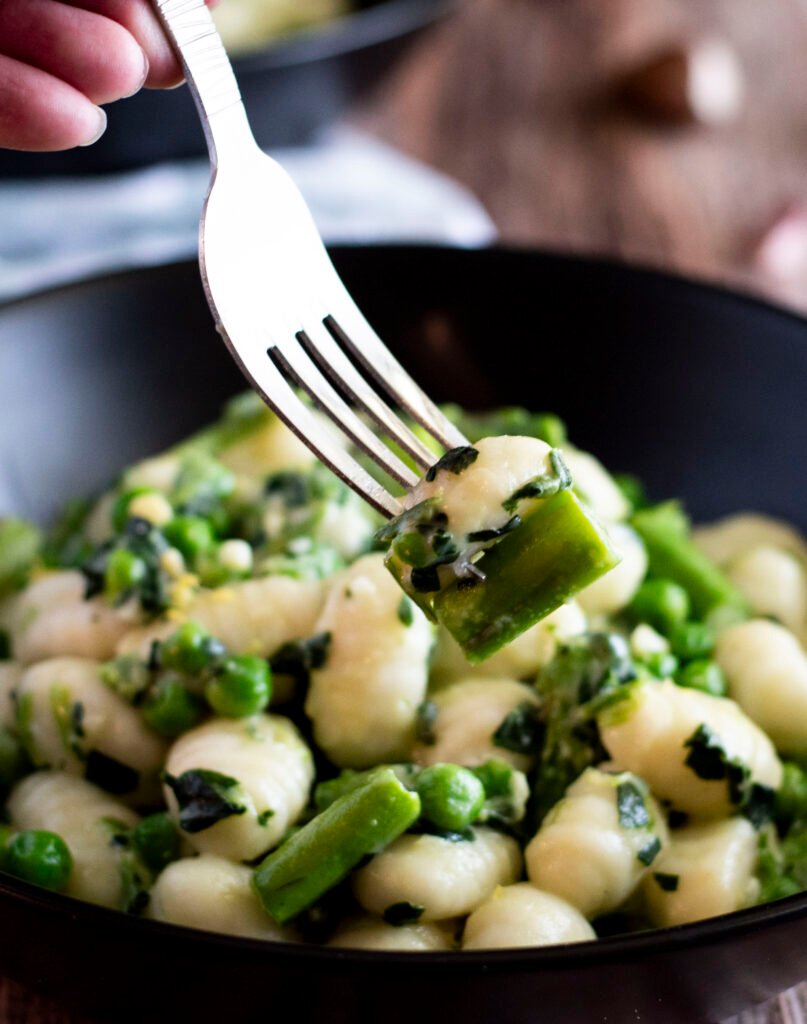
What you need for Gnocchi Primavera
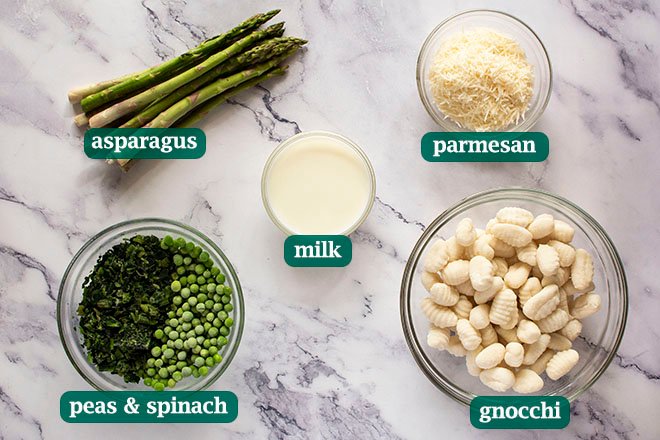
KEY INGREDIENTS
- Gnocchi – Store bought gnocchi can be very high in sodium. Choose the brand that has the lowest sodium per 100g, I used the Coles Kitchen potato gnocchi.
- Spinach – I used frozen. Spinach is a fantastic source of potassium, which our bodies use to regulate our blood pressure, and for muscle and nerve function. It is also loaded with vitamin K, which is essential for forming blood clots and maintaining bone health.
- Asparagus – Adds a fresh crunch. Asparagus contains a lot of folate, which is used in many body processes, such as cell growth and producing new DNA! Like spinach, it contains a lot of vitamin K! Asparagus also contains antioxidants, such as vitamins C and E, which may help reduce inflammation and prevent cell damage.
- Peas – I used frozen. Peas contain a good amount of manganese, which is used for bone health and enzyme reactions that help our bodies metabolise food. They also contain vitamin B1 (thiamine), which helps our bodies unlock energy from food. Peas also contain a decent amount of dietary fibre, which supports our gut health, prevents constipation, and has many other benefits!
- Parmesan – Also tends to be quite high in sodium. Where possible, choose a parmesan cheese low in sodium per 100g. Parmesan also tends to be high in fat, so it is best consumed in moderation. I used the Coles brand Parmigiano Reggiano.
- Milk – Preferably low fat. Makes the base for our creamy sauce and contains less fat than cream! Milk is a fantastic source of calcium and phosphorus, which are essential for maintaining healthy and strong bones. It is also high in vitamin B12, which is needed to make new blood cells and DNA and is important for supporting brain function. If using plant-based milk, choose an unsweetened, calcium-fortified option.
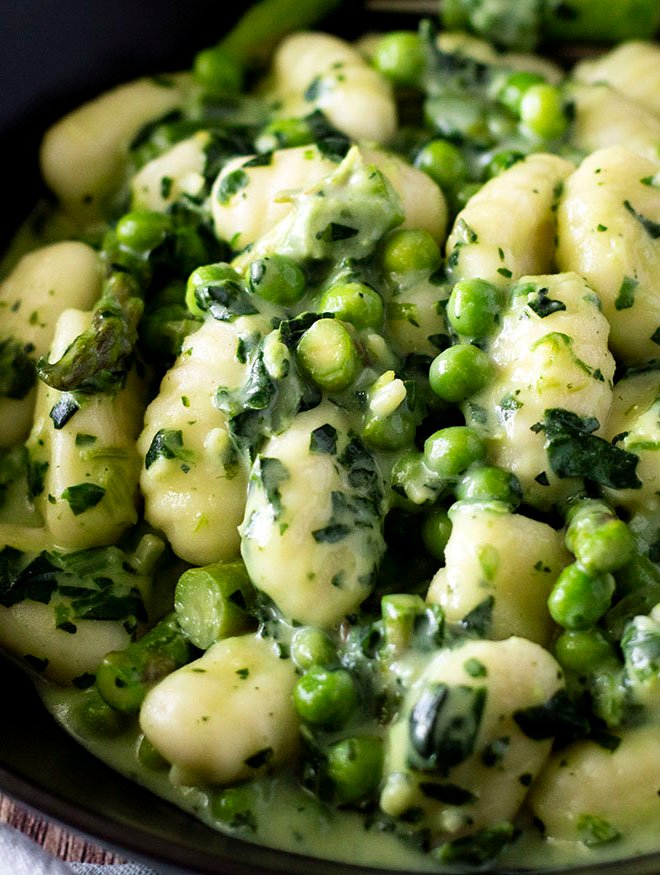
OTHER INGREDIENTS
- Garlic – I used 3 cloves, just enough to get a good touch of garlic flavour.
- Fresh chives – Adds a light oniony flavour that compliments the Parmesan, garlic and lemon rind. However, it can be removed without affecting the flavour too much.
- Lemon rind – 1/3 teaspoon, just enough to give a hint of lemon without overpowering the sauce.
- Extra virgin olive oil – A great healthy fat for cooking the vegetables.
How to make Gnocchi Primavera
- Fill a large pot with water, place over high heat and bring to the boil.
- Heat the extra virgin olive oil in a large skillet over medium-high heat. Add the garlic to the skillet and cook for 1 minute or until lightly golden and fragrant.

- Add the asparagus to the skillet and cook for 2 minutes. Then, add the frozen spinach, peas and fresh chives into the skillet. Cook for 1 minute or until the spinach has softened. We don’t want to overcook the peas, otherwise they’ll become mushy!

- Pour the milk into the skillet, bring it to a simmer, and then remove it from the heat. We want the vegetables and milk to be warm for when we add the gnocchi!
- Pour the gnocchi into the boiling pot of water. Once most of the gnocchi has risen to the top of the water, cook for a further 2-3 minutes (this is the key to getting soft gnocchi!). Transfer the cooked gnocchi to the skillet using a slotted spoon and stir to mix. Add the lemon rind and give a quick stir through.
- Sprinkle the parmesan cheese over the gnocchi and stir for 2-3 minutes or until it melts to create a creamy sauce. This way we’re using the left over heat from the gnocchi instead of the stovetop, which reduces our risk of curdling the cheese.
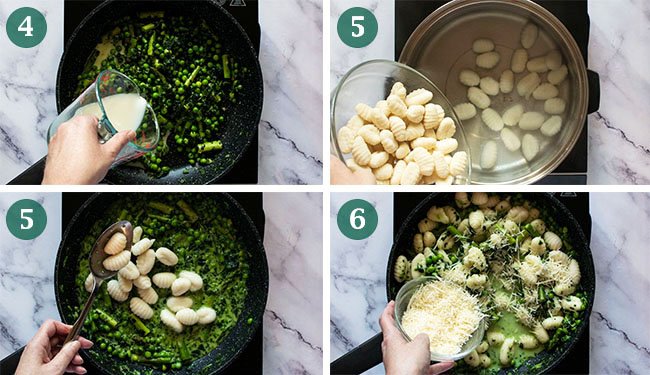
- Serve while hot with a fresh salad. Enjoy!
Storage
This dish should last up to 3 days in an airtight container in the fridge.

Tips & Substitutes
This recipe can be made with other firm Italian cheeses, such as Pecorino or Grana Padano, or just about any cheese that melts. Grana Padano is cheaper and has a milder flavour than Parmesan, but you can easily boost the flavour by adding a small amount of nutritional yeast.
Beware of buying supermarket home brand shredded cheeses, as they contain an anticaking agent, which prevents the cheese from melting smoothly.
You can substitute fresh asparagus for canned, just rinse (to remove excess sodium) and add it in step 4. Otherwise, this recipe can be customised with whatever soft vegetables you like. I’ve made this recipe with just frozen spinach.
You can use fresh silverbeet/swiss chard instead of frozen spinach. I recommend removing any hard stems, roughly chop the silverbeet/swiss chard and add it to the skillet before the asparagus. Once the leaves start to wilt, add the asparagus and continue as per the recipe. Or, for baby spinach, add it in with asparagus in step 3 and cook until wilted. If using fresh peas, throw them in at step 5.
Do you hate buying a block of Parmesan and having the other half go mouldy in your fridge? You can cut your leftover Parmesan into small blocks, put them in a bag, and freeze them for later. It also defrosts very quickly!
Hungry for more?
Don’t forget to subscribe to my newsletter and follow along on Facebook, Instagram and Pinterest for all the latest updates!

Tap or hover to scale
Ingredients
Gnocchi
- 2 tsp extra virgin olive oil
- 3 cloves garlic, finely diced
- 1 cup asparagus, cut into 2cm pieces (Note 1)
- 1 cup peas, frozen
- 1 cup chopped spinach, frozen (Note 2)
- 2 tbsp fresh chives, finely diced
- 500 g packet of gnocchi (Note 3)
Creamy Parmesan Sauce
- 1/2 cup milk, low fat (Note 4)
- 3/4 cup parmesan cheese, finely grated (Note 5)
- 1/3 tsp lemon rind, finely grated
Instructions
- Fill a large pot with water, place over high heat and bring to the boil.
- Heat the extra virgin olive oil in a large skillet over medium-high heat. Add the garlic to the skillet and cook for 1 minute or until lightly golden and fragrant.
- Add the asparagus to the skillet and cook for 2 minutes. Then, add the frozen spinach and peas into the skillet. Cook for 1 minute or until the spinach has softened.
- Pour the milk into the skillet, bring it to a gentle simmer, and then remove it from the heat.
- Pour the gnocchi into the boiling pot of water. Once most of the gnocchi has risen to the top of the water, cook for a further 2-3 minutes. Transfer the cooked gnocchi to the skillet using a slotted spoon and stir to mix. Add the lemon rind to the skillet and give a quick stir through.
- Sprinkle the parmesan cheese over the gnocchi and stir for 2-3 minutes or until it melts to create a creamy sauce.
Notes
- Asparagus – You can substitute fresh asparagus for canned, just rinse (to remove excess sodium) and add it in step 4.
- Spinach – You can use fresh silverbeet/swiss chard instead of frozen spinach. I recommend removing any hard stems, roughly chop the silverbeet/swiss chard and add it to the skillet before the asparagus. Once the leaves start to wilt, add the asparagus and continue as per the recipe. Or, for baby spinach, add it in with asparagus in step 3 and cook until wilted. If using fresh peas, throw them in at step 5.
- Gnocchi – Store bought gnocchi can be very high in sodium. Choose the brand that has the lowest sodium per 100g, I used the Coles Kitchen potato gnocchi.
- Milk – If you want to use plant-based milk, choose one that is unsweetened and calcium-fortified.
- Parmesan – I used the Coles brand Parmigiano Reggiano. You can use other Italian cheeses, such as Pecorino or Grana Padano, or just about any cheese that melts. Grana Padano is cheaper and has a milder flavour than Parmesan, but you can easily boost the flavour by adding a small amount of nutritional yeast. Beware of buying supermarket home brand shredded cheeses, as they contain an anticaking agent, which prevents the cheese from melting smoothly.
- Storage – Should last up to 3 days in an airtight container in the fridge.
- Nutrition – Calculated per serve, assuming 4 serves.


